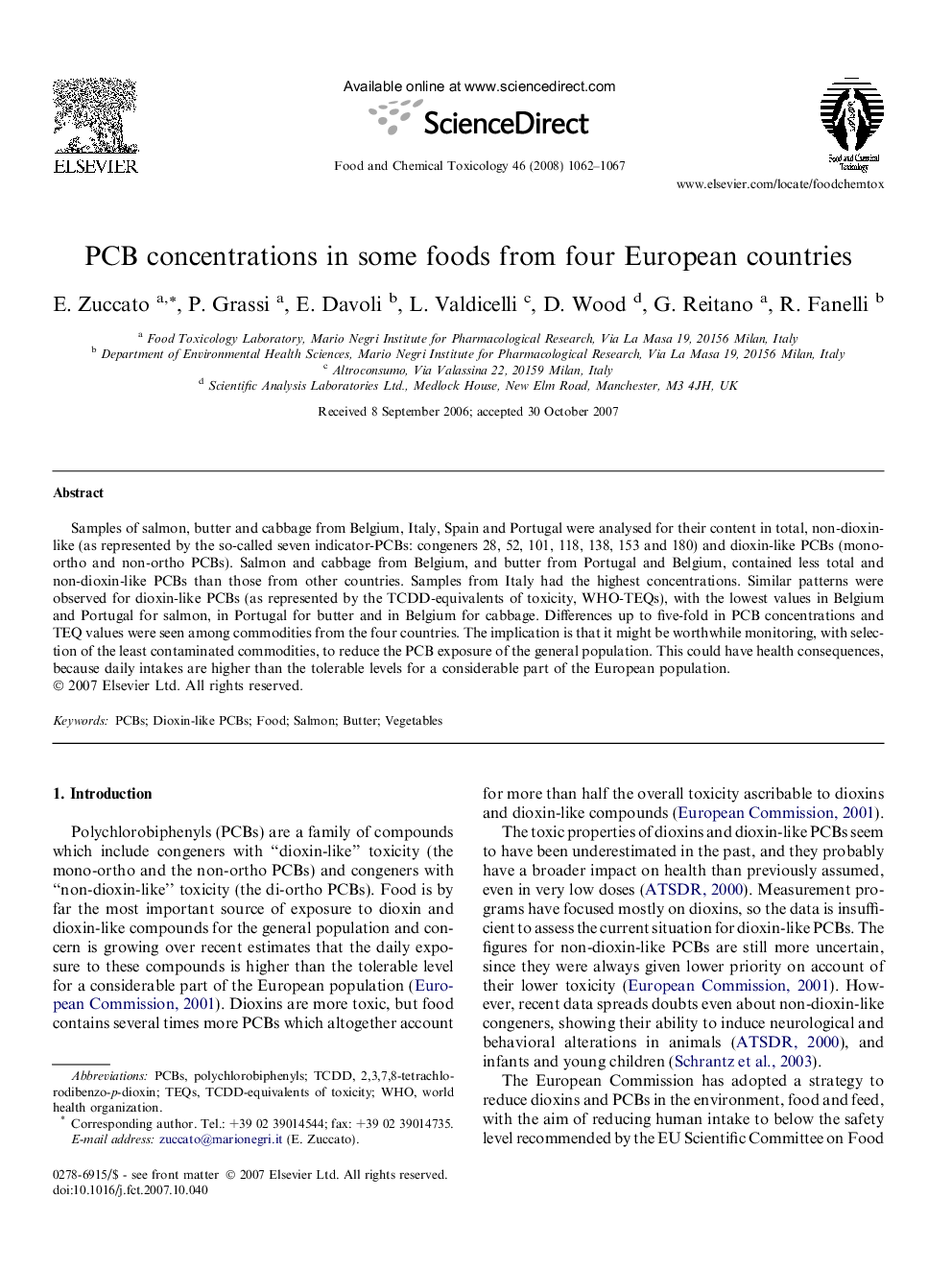| Article ID | Journal | Published Year | Pages | File Type |
|---|---|---|---|---|
| 2587688 | Food and Chemical Toxicology | 2008 | 6 Pages |
Samples of salmon, butter and cabbage from Belgium, Italy, Spain and Portugal were analysed for their content in total, non-dioxin-like (as represented by the so-called seven indicator-PCBs: congeners 28, 52, 101, 118, 138, 153 and 180) and dioxin-like PCBs (mono-ortho and non-ortho PCBs). Salmon and cabbage from Belgium, and butter from Portugal and Belgium, contained less total and non-dioxin-like PCBs than those from other countries. Samples from Italy had the highest concentrations. Similar patterns were observed for dioxin-like PCBs (as represented by the TCDD-equivalents of toxicity, WHO-TEQs), with the lowest values in Belgium and Portugal for salmon, in Portugal for butter and in Belgium for cabbage. Differences up to five-fold in PCB concentrations and TEQ values were seen among commodities from the four countries. The implication is that it might be worthwhile monitoring, with selection of the least contaminated commodities, to reduce the PCB exposure of the general population. This could have health consequences, because daily intakes are higher than the tolerable levels for a considerable part of the European population.
